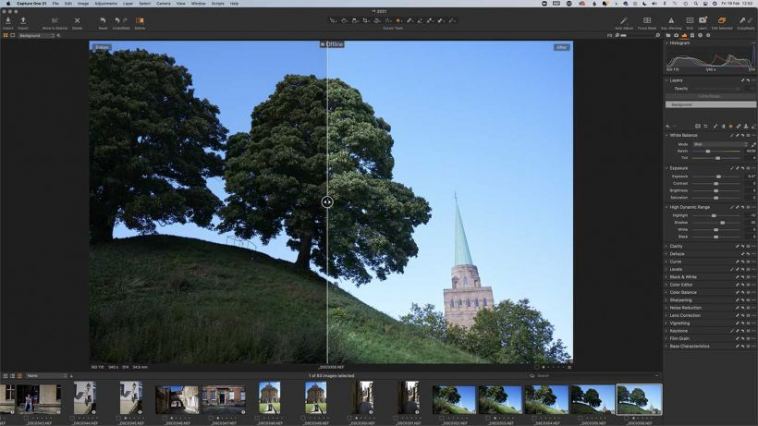- Like
- SHARE
- Digg
- Del
- Tumblr
- VKontakte
- Flattr
- Buffer
- Love This
- Save
- Odnoklassniki
- Meneame
- Blogger
- Amazon
- Yahoo Mail
- Gmail
- AOL
- Newsvine
- HackerNews
- Evernote
- MySpace
- Mail.ru
- Viadeo
- Line
- Comments
- Yummly
- SMS
- Viber
- Telegram
- JOIN
- Skype
- Facebook Messenger
- Kakao
- LiveJournal
- Yammer
- Edgar
- Fintel
- Mix
- Instapaper
- Copy Link
Introduction
Photo editing can be a regular occurrence for a lot of us. Social media like Instagram and every kind of PC or laptop comes with a basic photo editor. Adjusting brightness, contrast, saturation (or applying filters to do the heavy lifting) is a part of everyday life nowadays.
But many look to take it a step further and become professionals in photo editing. Getting a top of the range camera is only one part of the process, you’ll need industry standard software to create the photos you see in your mind’s eye. Bear in mind that you’ll need to choose the software that suits your budget, level of experience and your computer specs. Don’t worry, we’ve got you covered with a list of industry-standard photo editing software.
Not sure if your PC can handle these programs? Check out our range of workstations designed to handle the most CPU intensive photo editing software.
1. Adobe Photoshop CC 2021
The name everyone immediately thinks of for digital photo editing is Adobe’s Photoshop. The software specializes mostly in image manipulation through its use of layers and masks allowing you to create complex composite images. If you’ve done any kind of photo editing then you’ve most likely come across Photoshop before and are used to its features and user interface. For novices the interface can seem intimidating but the worldwide use of the software means there’s no shortage of tutorials online for when you’re stuck.
Photoshop isn’t the complete package though. It includes features for illustrators, videographers and graphic designers so a lot of photo centric features are left out. You will need the use of Adobe‘s additional software in order to fully take creative control over your photographs. Thankfully, Adobe’s switch from licenses to subscriptions means this additional software comes hand in hand with Photoshop.
2. Adobe Lightroom
If your focus is more on photo enhancement over image manipulation then you ought to be using Adobe Lightroom. Officially classed as photo-workflow software, this software allows for image cataloging, in depth photo corrections and processing of raw image files. This means you can view your photos exactly how they were captured by your camera’s sensor before you compress it down into a JPEG or PNG file.
Bear in mind, there are two versions of Lightroom. The program Lightroom (formerly Lightroom CC) includes a streamlined interface and online photo storage while Lightroom Classic uses standard desktop storage and has a more comprehensive set of editing features. We recommend sticking with Lightroom Classic so you always have access to your photos even when your internet goes down.
Adobe currently offers both Photoshop and Lightroom programs as a part of its Creative Cloud Photography subscription. Priced at £9.98/month with 20GB online storage or £19.97 a month with 1TB. These are popular photo editing software for a reason and come strongly recommended for getting the most out of your photos.
3. Affinity Photo
Adobe’s program certainly are good but they certainly don’t come cheap. Thankfully Affinity Photo offers a strong range of tools at a much lower cost. It’s features make it a strong competitor to Photoshop in its focus on composite image layering as well as retouching tools to fix imperfections in your photos. The one downside is the lack of cataloging tools that a program like Lightroom offers although this won’t be a feature required for everyone.
Affinity Photo is currently priced at £48.99 and comes subscription-free. Once you’ve bought it, you got it which is a big plus over the rolling payments required for Adobe products. While some will need photo cataloging tools, this program is an incredibly strong photo editing software for those looking to create professional photo manipulations.
4. Capture One Pro
This Lightroom competitor has a professional range of photo enhancement and cataloging tools. One of its biggest strengths is it’s raw photo file processing that gives you a sharper conversion with less artifacts than you see in Lightroom. There are versions of Capture One Pro that are exclusive for cameras by big name manufacturers like Fujifilm, Sony and Nikon although most major cameras are supported in the base version.
Photo adjustments are easily tracked through its sessions-based workflow. Each adjustment is shown as a separate layer so you can easily track each edit and how it’s affecting the original photo.
Capture One Pro comes with both one time payment and subscription prices. Subscriptions come at either £24/month or £179/year while a licence is £299 to own. They also offer a range of presets included in subscriptions for a slightly higher price. The tools on offer are very strong but certainly aimed at professionals rather than hobbyists. The pricing is also quite expensive but the option of a one-time payment may soften the blow if you see yourself using this software on a regular basis.
5. DxO Nik Collection 4
This photo editing suite consists of eight separate plugins (which are also available to be used as standalone programs) all presented in a sleek modern user interface. Some of the plugins included are Analog Efex Pro which emulates an old film camera, Color Efex Pro has a comprehensive set of colour correcting and retouching tools while Silver Efex Pro offers some of the best tools for creating black and white photos.
One of the Nik Collection’s most unique features is the ‘U Point’ adjustment system. This replaces masking and layers and instead has you setting ‘Control Points’ so adjustments can be made in a precise area of the photo and in real time. It’s a very user friendly system that makes photo editing just a little bit simpler without losing any freedom when making adjustments.
Nik Collection 4 is currently available for a one-time purchase of £88.99 making it a cheaper alternative than some other programs. However as these are plugins you will need a photo editing workstation to get the most out of your purchase. The Nik Collection is offered in a bundle with DxO’s Photo Lab to alleviate this but the plugins are also compatible with Adobe Photoshop and Lightroom.
Recommended Minimum System Requirements
Most of the software on this list don’t have particularly demanding minimum specs but we recommend going above what’s specified to avoid running into problems. Here are a few general guidelines:
- Running off a SSD will speed up rendering images and booting up these programs.
- While 8GB is the minimum RAM for most software going up to 16GB is preferable when working on big photo files like a panorama.
- If you’re editing a lot of images, consider an external hard drive of at least 1TB so you don’t run out of space too quickly.
Whatever your specs, almost all the photo editing software on this list offer a free trial to see if it runs well on your PC and if the software is right for the kinds of things you want to achieve. Whether you’re a photography professional or hobbyist, get creative with some of these expert programs!
About the Author:
James Sayers has a passion for writing on media such as music, film and video games. He works at Tillison Consulting as an SEO Campaign Manager working on blog content and SEO improvements for clients.

